|
Basic Dog Care
To Links
| Dogs are pack animals, which means they do things as a group. When we
bring a dog into our home we become their pack. Dogs that are kept in a kennel, tied up,
or not allowed to interact with its human pack develop behavior problems. What they really
are saying is "make me part of your family. A friendly pat on the head, a hello as
you pass them, playing with a ball or stick, and letting your dog be part of your family
will let your dog know that he belongs to your human pack. |
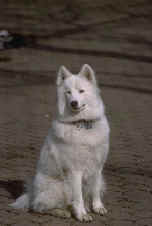
|
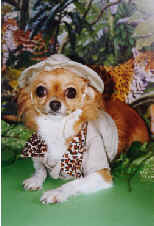 |
Dogs like to feel
that they have a job within their family pack. Some dogs are guard dogs, some are herding
dogs, some help their human family to do things they cannot do themselves like guide dogs
for the blind. Some dogs just want to be your friend and pal. Your dog may even save your
life. |
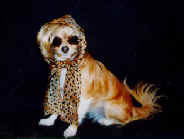 |
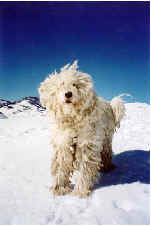
|
Puppies are so cute! But they take a lot of care. They need your
attention, guidance, and love 24 hours a day. They don't automatically know not to go
potty in the house, or not to tear up your favorite shoe. Puppies respond to firm tones of
voice but not loud or yelling voices. If you yell at your dog he will only get scared.
Always call your dog like you are inviting him to a party. |
SIGNS
OF A HEALTHY PUPPY |
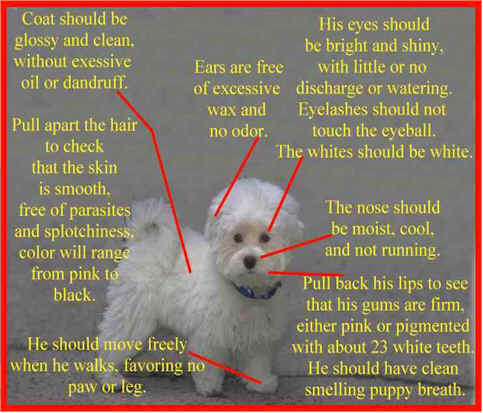
|
Training: Your dog
is never too old or too young to learn what you want him to do. Having your dog
"sit" and "stay" may save his life when he wants to dash across the
street to say hello to another human or dog. All dogs that belong to a human pack should
go to "obedience school." Even when your dog is all grown up, he is like someone
in kindergarten. They depend on you to help them and guide them because you are the pack
leader.
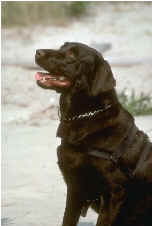 Most dogs that don't mind you don't know what you want
from them. All dogs want to please. They are "team" players and want to go along
with the group. Dogs who bark all the time, act mean, act scared of you, don't come when
you call, chew up furniture, or go to the bathroom in your house, are all saying that
something is not right with them or that they don't know what you want. Spanking a dog,
rubbing a dog's nose in his ‘soiled’ area, or yelling at his bad behavior, only
makes your dog confused and doesn't fix the problem. Show him what you expect. Most bad
behavior can be corrected by taking your dog outside regularly so he can go to the
bathroom, play with him so he feels like he is part of the family and doesn't need to tear
apart furniture, or bark to get attention. Most dogs that don't mind you don't know what you want
from them. All dogs want to please. They are "team" players and want to go along
with the group. Dogs who bark all the time, act mean, act scared of you, don't come when
you call, chew up furniture, or go to the bathroom in your house, are all saying that
something is not right with them or that they don't know what you want. Spanking a dog,
rubbing a dog's nose in his ‘soiled’ area, or yelling at his bad behavior, only
makes your dog confused and doesn't fix the problem. Show him what you expect. Most bad
behavior can be corrected by taking your dog outside regularly so he can go to the
bathroom, play with him so he feels like he is part of the family and doesn't need to tear
apart furniture, or bark to get attention.
|
TEN
RIGHT WAYS TO CORRECT YOUR DOG |
TEN WRONG WAYS TO
CORRECT YOUR DOG |
1. Build a good relationship with your dog before makes any
corrections. |
1.
Never hit your dog, either with your hand or an object such as a rolled-up newspaper or
something he has chewed. |
| 2.
Use a choke collar to make a correction - they make it easy to get his attention. |
2.
Never shout at your dog or blame him for not obeying your command. |
| 3.
Use positive reinforcement. |
3.
Never chase after your dog. |
| 4.
Correct at the moment your dog makes a mistake, not a few minutes after. |
4.
Never corner your dog. |
| 5.
Use food, toys, attention, praise or a combination of these to reward your obedient dog. |
5.
Never jerk your dog's leash upward. This could injure his neck. |
| 6.
Be consistent with corrections. |
6.
Never leave your dog locked up in a small dark room. |
| 7.
Follow a correction with another opportunity for our dog to do it and get it right, and
reward him when he does so. |
7.
Never punish your dog for doing something you did not see him do at that precise moment. |
| 8.
Rattle a loud, noisy object or use a low tone in your voice to startle your dog just as he
is about to do something wrong. |
8.
Never withhold feed or water from your dog for long periods of time. |
| 9.
Use a collar and leash when training outside. |
9.
Never do anything anyone, including a trainer, tells you to do that you don't feel
comfortable doing. |
| 10.
Be comfortable correcting him around others. |
10.
Never rub his nose in messes in the house. |
Vaccinations: Just like you, dogs need shots to protect them against illness and
disease.
You need to provide fresh clean water at all times, and adequate
food throughout the day.
HOW TO TELL IF YOUR DOG IS GETTING ENOUGH FOOD |
| VERY THIN |
RIBS |
Ease to feel with no fat
cover |
| TAIL BASE |
Prominent raised bony
structure with not fat under the skin |
| ABDOMEN |
Sever abdominal tuck
accentuated hourglass shape |
| UNDERWEIGHT |
RIBS |
Easy to feel with minimal fat
cover |
| TAIL BASE |
Raised bony structure with
little fat under the skin |
| ABDOMEN |
Abdominal tuck, marked
hourglass shape |
| IDEAL |
RIBS |
Possible to feel with slight
fat cover |
| TAIL BASE |
Either a smooth contour or
some thickening possible to feel bony structures under a thin layer of fat |
| ABDOMEN |
Abdominal tuck, well
proportioned lumbar waist |
| OVERWEIGHT |
RIBS |
Difficult to feel with
moderate fat cover |
| TAIL BASE |
Smooth contour or some
thickening; still possible to feel the bony structures |
| ABDOMEN |
Little or no abdominal tuck
or waist, back slightly broadened. |
| OBESE |
RIBS |
Very difficult to feel with
thick fat cover |
| TAIL BASE |
Appears thickened, difficult
to feel the bony structures |
| ABDOMEN |
Pendulous bulging belly with
no waist, back markedly broadened, muscle areas on either side of the spine bulge at the
sides |
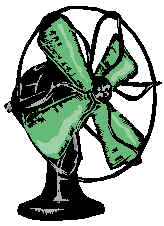 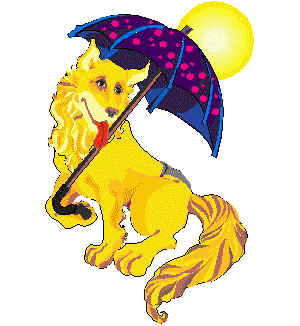
|
Summer Hazards: Your dog should NEVER be left in the car with the
windows up during the summer. The temperature in a car can soar to over 160 degrees in 10
minutes, hot enough to kill a human and a dog. Your dog has tough feet but in the hot
summer, the bed of a truck can create painful burns from the hot metal. Provide him a
blanket to lay on. |
NEVER allow your dog in the back of a truck without being restrained by a leash. Sudden
turns can throw him out of the truck. This also makes sure he cannot jump out while the
truck is moving to chase another dog, cat, or squirrel and get hurt.
|
HOW
TO AVOID DOG BITES
Stand very still and try to be calm: DON’T SCREAM OR RUN.
Don’t stare at the dog, but be aware of it.
Don’t make any sudden moves
Try to stay until the dog leaves, if it doesn’t-very slowly
back away
If the dog comes up to sniff you, don’t resist
If you say anything, speak calmly and firmly
Plan, in case of attack, to buffer a bite with a purse, jacket,
book, or other object
Climb a tree or jump on a car hood
If you fall or are knocked down, curl into a ball with your arms
and hands over your head and neck: try not to scream or roll around
Get a good look at the dog so that you can properly identify it
later, if you have to report a bite.
(From "Choosing & Caring for a Shelter Dog) |
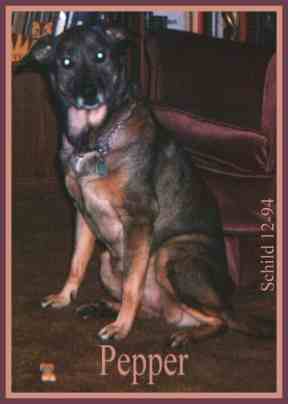 |
| This was my dog, PEPPER
I got Pepper when she was 12 weeks
old. She was a German Shepard and Australian Shepard mix.She was smaller than my cat when
I brought her home. She was a very good dog. We went to obedient classes and learned how
to work together. She was very well mannered and lived in the house. She enjoyed sleeping
on the foot of the waterbed until she was no longer able to get up into the bed alone. She
had hip dysplasia which is common in larger breeds. She was my best friend for 13 years
and was a natural protector. She went to the Rainbow Bridge in May, 1999.
I will always remember you Pepper.
I Love you, and miss you. |
|
|
 Back to Home Page
Back to Home Page![]()